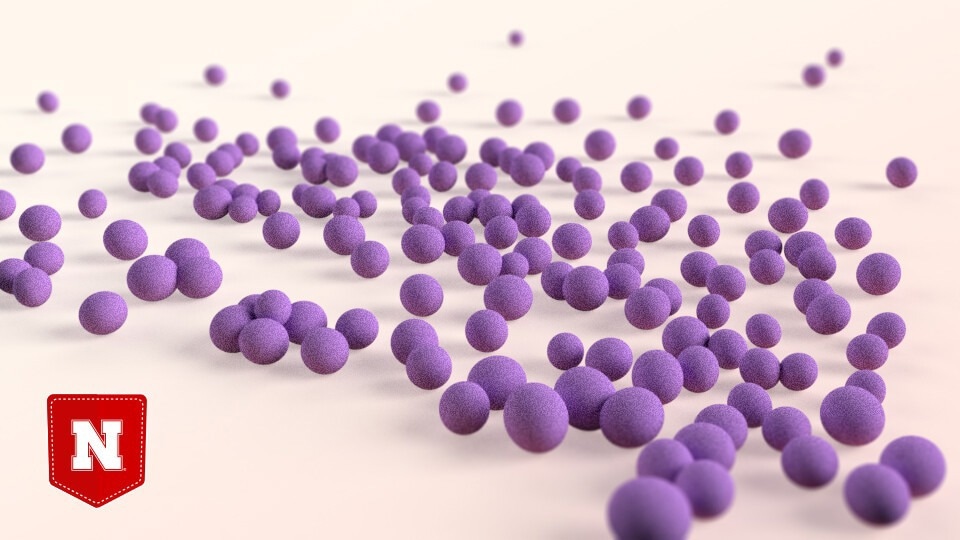Reviewed by Danielle Ellis, B.Sc.Jun 20 2022
In hospitals, the Staphylococcus aureus bacteria can be transported from the skin or nasal cavity into open wounds and, possibly, the bloodstream, posing a fatal hazard. Staph infections killed over 20,000 Americans in 2017, according to the Centers for Disease Control and Prevention. Antibiotic-resistant S. aureus forms, such as the notorious MRSA, pose a serious concern to patients.
 A rendering of Staphylococcus aureus, a bacterial species known for causing staph infections. Image Credit: Scott Schrage | University Communication and Marketing.
A rendering of Staphylococcus aureus, a bacterial species known for causing staph infections. Image Credit: Scott Schrage | University Communication and Marketing.
Researchers often examine S. aureus pathogenicity and antibiotic resistance in vitro, that is, outside of the human body, on a so-called culture medium that favors microbe growth. Some of the studies looked at how human serum, or the fraction of blood plasma lacking coagulants, affects S. aureus virulence. Serum’s impact on the bacterium’s survival and metabolism, the latter of which impacts every aspect of its life cycle, has received far less attention.
So what?
Greg Somerville, Robert Powers, and colleagues from Nebraska looked at two strains of S. aureus, one sensitive to the antibiotic daptomycin and the other resistant to it. Before analyzing metabolic alterations and sensitivity to daptomycin, the researchers cultured each strain in a growth medium containing 55% serum—the approximate level present in human blood.
When both strains were cultivated in the serum-rich medium, they were less sensitive to daptomycin, suggesting that the serum reduces the antibiotic’s efficacy. In addition, the bacteria lowered the synthesis of many amino acids, increased the fermentation of other acids, and changed the creation of a salt tolerance molecule.
Now what?
The difficulties in developing new, effective antibiotics have turned into a global health emergency. According to the researchers, including serum into growth media to better simulate the milieu of the bloodstream and accounting for bacterial reactions to that milieu might increase the chances of finding viable candidates.
Source:
Journal reference:
Somerville, G. A., et al. (2022) Human Serum Alters the Metabolism and Antibiotic Susceptibility of Staphylococcus aureus. Journal of Proteome Research. doi.org/10.1021/acs.jproteome.2c00073.